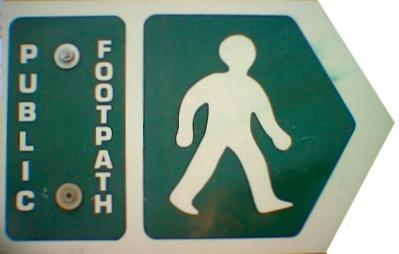Using Public Rights of Way
OutdoorsWest is a showcase for the public rights of way network in Bath & North East Somerset, Bristol and South Gloucestershire. It's a tool for you to get out and about exploring in the fresh air, and to help the Councils ('us') to manage the network. We refer to the paths on OutdoorsWest as 'our paths' to describe the public rights of way in this area, but, they are paths open to all members of public, whether local people or visitors to the area. We also can include other paths on our mapping, and in the prepared routes on the site, including permissive paths. These are generally open to the public, but not with the same legal rights as on public rights of way.
Public rights of way have the same legal status as other roads and streets, that is, members of the public have a legal right to 'pass and repass' - basically to travel along them. The same laws that keep other highways open are used on Public Rights of Way. The main legal difference is that public rights of way are mainly used by non-vehicular traffic - ie, by walkers (and runners), horse riders and cyclists. And, public rights of way are classified, defining the legal right by different classes of user:

- Public Footpath: You may walk on a footpath and you are also entitled to use it with a pram, pushchair or wheelchair although many paths, particularly rural ones, are not suitable for such use.
- Public Bridleway: You may walk, ride or lead a horse, or ride a bicycle along a bridleway. Cyclists should give way to pedestrians and horseriders. Most bridleways haven't been designed or improved for cyclists, so they may be difficult to use on bikes.
- Restricted Byway: You can use a restricted byway in the horse-drawn carriage and in same ways that you can use a bridleway.
- Byway Open to All Traffic: This is a highway that is used by the public mainly for walking, riding horses or cycling, but over which there is also a right to use any kind of wheeled vehicle - whether it is a horse-drawn vehicle or taxed and insured motor vehicle.
Public rights of way can be tarmacked or paved, but are most often unsurfaced and unfenced. Though the surface of these paths has the same status as other highways, there is often nothing to physically separate the path from the land around them, which is often privately owned. Where public footpaths and bridleways cross fields, farmers are allowed to plough them or plant crops on them, but must clear the path after a short period of time. Councils can also authorise landowners to put up gates, kissing gates, and stiles to control their livestock.
There is a lot more information on Public Rights of Way, including how they are legally recorded, how we manage them and information for landowners over who's land public rights of way cross, under 'Advice and Information'.